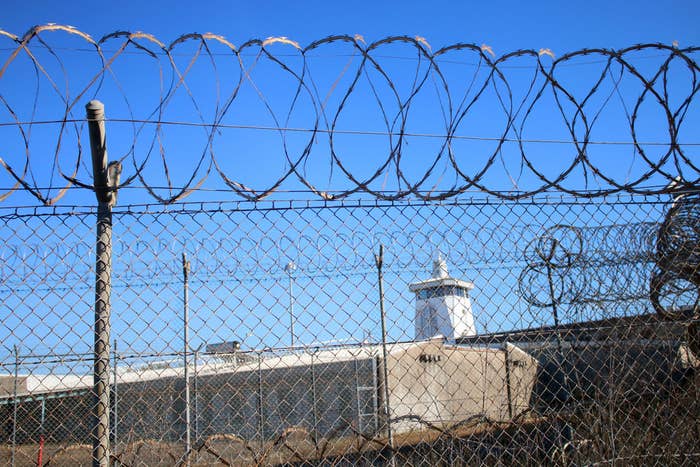There are 38 children being held in detention in Australia's Northern Territory and every single one of them is Aboriginal, a parliamentary committee heard last week.

This stark fact was revealed in an Estimates Committee hearing last Wednesday, where the Territory Families department was questioned over how the rate of Aboriginal children in detention had changed since the royal commission.
The Royal Commission into the Protection and Detention of Children in the Northern Territory was announced in 2016 following shocking footage from inside detention centres broadcast on the ABC program Four Corners, including then 17-year-old Dylan Voller shackled to a chair and wearing a spit hood.
Asked "How many Aboriginal children are being held in detention and has this changed since the royal commission?", deputy CEO of Territory Families Jeanette Kerr said "As of today, 100% of the children in detention are Aboriginal. The proportions have not changed since the royal commission."
She said there were 17 children in Don Dale Youth Detention Centre and 21 in Alice Springs.
The statistic prompted anger among people in the community.
Every single child held in NT prisons is Aboriginal. Australian apartheid in action
Numerous studies and yearly justice statistics have shown that Indigenous children and adults are over-incarcerated across Australia on a per capita basis.
A report from the Australian Institute of Health and Welfare (AIHW) said that on an average day in 2016-17, 58% of young people aged 10-17 in detention were Indigenous. These kids make up about 5% of all kids aged 10-17 in Australia.
Here's a state and territory breakdown for an average day in 2016-17 of young people (defined in these stats as those aged 10-19) in detention.
Northern Territory: 95% Indigenous.
(Indigenous 37, non-Indigenous 2, total 39.)
Western Australia: 73% Indigenous.
(Indigenous 107, non-Indigenous 38, total 146.)
Queensland: 71% Indigenous.
(Indigenous 129, non-Indigenous 53, total 182.)
South Australia: 58% Indigenous.
(Indigenous 35, non-Indigenous 24, total 60.)
New South Wales: 53% Indigenous.
(Indigenous 146, non-Indigenous 130, not stated 3, total 278.)
Tasmania: 27% Indigenous.
(Indigenous 3, non-Indigenous 8, total 11.)
Australian Capital Territory: 25% Indigenous.
(Indigenous 2, non-Indigenous 6, total 8.)
Victoria: 16% Indigenous.
(Indigenous 31, non-Indigenous 158, total 189.)
These statistics are based on data provided by the AIHW. The totals may not equal the sum of the groups due to rounding.
All of these states have different populations of Indigenous young people – so how over-incarcerated are these kids, state by state?
Across Australia, Indigenous kids are 24 times as likely to be in detention and 17 times as likely to be under a community supervision order than non-Indigenous kids.
In NSW they are 21 times as likely to be locked up, in Victoria 13 times, in Queensland 30 times, in WA 41 times and in in SA 42 times.
In the remaining three jurisdictions, the figure was not published because the number of Indigenous (ACT, Tasmania) or non-Indigenous (NT) children is too small.
In the estimates committee last week, the independent member for Nhulunbuy, Yingiya Mark Guyula, described how Australia's justice system treated Aboriginal children as "inhumane, costly, and does not work".
"The royal commission provided evidence that the ways that the Balanda [white person's] system treats Aboriginal children is inhumane, costly and does not work," he said in a question read out by MP Robyn Lambley.
"In my electorate of Nhulunbuy, we want to see our elders in control of raypirri – or discipline – for our young people. We want troubled young people out on homelands with oversight from elders and access to education from our people and through the school system. The problem is, this requires a genuine partnership between government and Yolngu leaders with funding to assist our young people."
Asked whether there was money for such a program, minister Dale Wakefield said it was "an area we are going to need to continue to develop".
"I do think there are some further challenges on how we provide the in-place community-based detention where people are on country and remain on country and have access to senior people who can also take a cultural approach to what is needed for that young person. That is something we are continuing to do," she said.
There was money in the budget for further regionalisation and to extend an existing model, she said.
"I think it is probably going to look different from place to place. Whilst the member for Nhulunbuy has a very strong vision for what happens on Yolngu land, I think that will look very different on Warlpiri land or on country as well."
